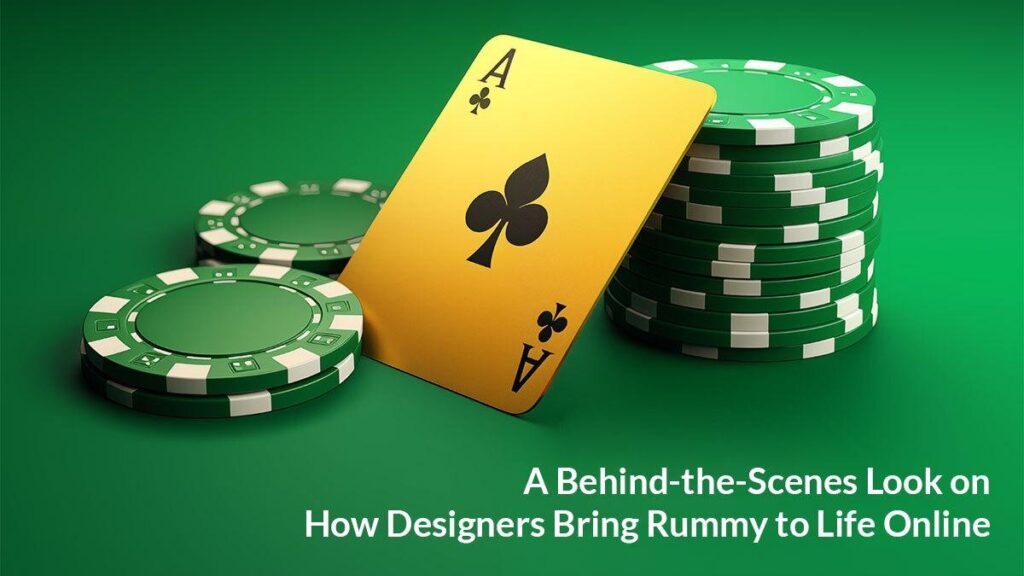
Rummy is a darling card game loved by millions worldwide. It is the love and support of its loyal fans that has given Rummy its prestigious place in the digital realm. Fortunately, designers have left no stone unturned to make real cash Rummy games online as exciting as the game’s physical version that is played face-to-face. Through a meticulous design process that blends UX design, creativity, and technical precision, designers have breathed new life into Rummy games online and paved the way for immersing gaming experiences.
If you’ve always wondered what went behind the creation of your favourite Rummy game, here’s a sneak peek.
- In-depth understanding of the game’s essence
Rummy games online are nothing without the traditional rules, gameplay, and emotional appeal. Hence, the design process starts with designers spending hours understanding the nuances of the game and what makes it so popular and appreciated worldwide. The goal is to translate the physical experience into a digital one as best as possible, ensuring authenticity while offering enhancements allowed by online platforms, such as instant dealing, quick shuffling, and real-time multiplayer interaction.
- Conceptualising the game’s design
Once designers have gained an in-depth understanding, the design process kick-starts with the creation of mockups and wireframes outlining the layout of the game. This includes designing the cards, the game table, and UI elements.
Wireframes emphasise functionality, ensuring the game’s flow is intuitive and the players can easily navigate through the different options, such as declaring, sorting cards, or communicating with other players.
At this stage, there are several brainstorming sessions between designers and various rounds of edits before the final design gets finalised.
- Creating a visually appealing environment
In the online Rummy experience, visual design plays a critical role. If it is not visually appealing, Rummy enthusiasts will look elsewhere. Therefore, designers focus on creating high-quality graphics that evoke the look and feel of a real card table. The textures, colour scheme, and animations are chosen carefully to make the game aesthetically appealing while reducing distractions.
Also, designers work to ensure the game design is consistent across different devices.
- Emphasis on UI design and UX design
The UI (user interface) design is crafted to be user-friendly so that players of varying skill and experience levels can enjoy the game. Designers focus on accessible and clear controls, making sure all the buttons are visible and easier to press. They also focus on designing the cards in a way that they move easily when clicked on the discard pile or the stockpile.
Features like customisable avatars and backgrounds are also included in some of the Rummy app designs to personalise the gaming experience. These additional features are largely the demands of individual game developers, and they might vary.
UX (user experience) design ensures that the Rummy game is engaging and compels players to keep returning. To achieve this, designers focus on creating responsive feedback, smooth transitions, and a balance between rewards and challenges. While designing the Rummy game, designers also consider player psychology and integrate elements to keep them motivated, such as in-game purchases, rewards, and leaderboards. These elements help increase player retention.
Do you keep playing Rummy on the same app just because you want to see your name on top of the leaderboard? This is one of the ways the app’s design entices you to keep coming back.
- Crafting multiplayer interaction design
The multiplayer experience is one of the essential aspects of online Rummy. This is why designers expend a lot of their energy and skills to create a seamless multiplayer gaming environment where you can interact with other players and compete with them. You can even communicate with other players and befriend them.
This engaging multiplayer environment within the game is created by designing chat functions, real-time interactions, and friend lists, mimicking the social aspects of playing Rummy in person. Plus, designers also include features to connect you with players worldwide in real-time so you can compete with them, challenge them, and win rewards.
- Focus on animating game elements
Animation is the most important aspect that brings the game to life. From the way the cards are shuffled and dealt to how they are arranged on the table, everything is possible because of animation. Through the incorporation of engaging animations for shuffling, sorting cards, or discarding cards, designers aim to add realism to the virtual game.
Designers often also include visual and sound cues as feedback mechanisms to make the game much more interesting and immersive.
- Devising the game engine
The game engine is the backbone of online Rummy platforms as it handles the core mechanics of the game. This includes a robust random number generator that ensures unbiased and fair gameplay. Thanks to this algorithm, the order of the cards in the deck is determined, and the sequences of the players’ turns are determined.
Additionally, security measures are also implemented within the game to discourage players from cheating and ensure fair play. This includes measures like anti-cheat mechanisms, encryption, and random seed generation.
- Carrying out tests
Once the rummy game is designed, stringent testing must be performed to identify and fix any bugs and issues. This is to ensure that you can enjoy a bug-free gaming experience. At this stage, developers and designers collaborate to fix issues that might affect gameplay. User feedback is also critical because it helps designers refine the mechanics of the game’s interface and ensure it meets the expectations of the players.
The bottom line
Designing and developing online Rummy games is a complicated and collaborative process that blends technology, creativity, and user-centric design. Designers carefully analyse every aspect to create a game that is not just visually appealing but also seamless to navigate and intuitive.

